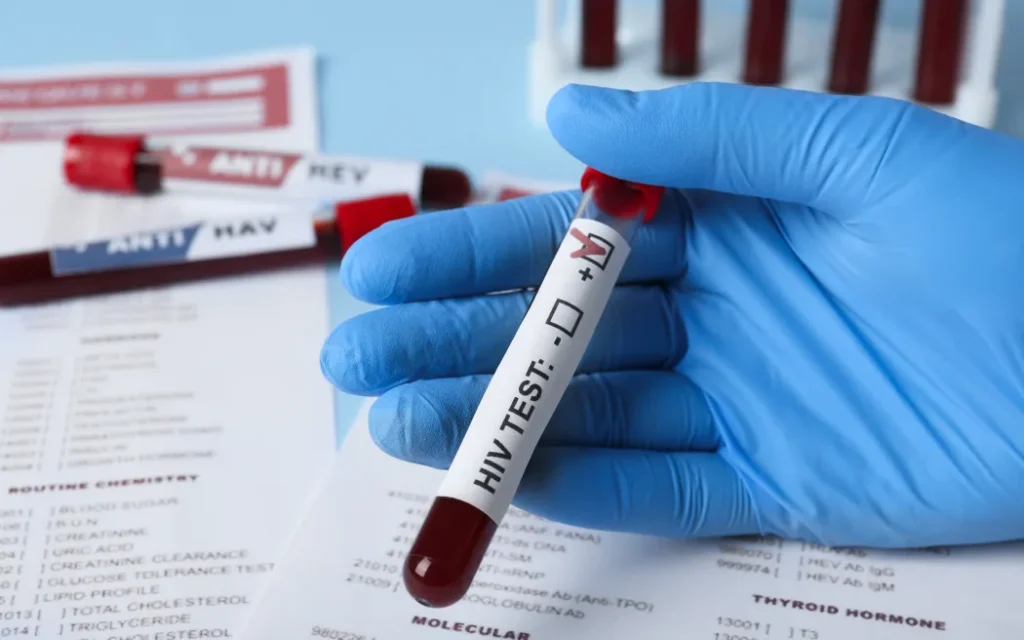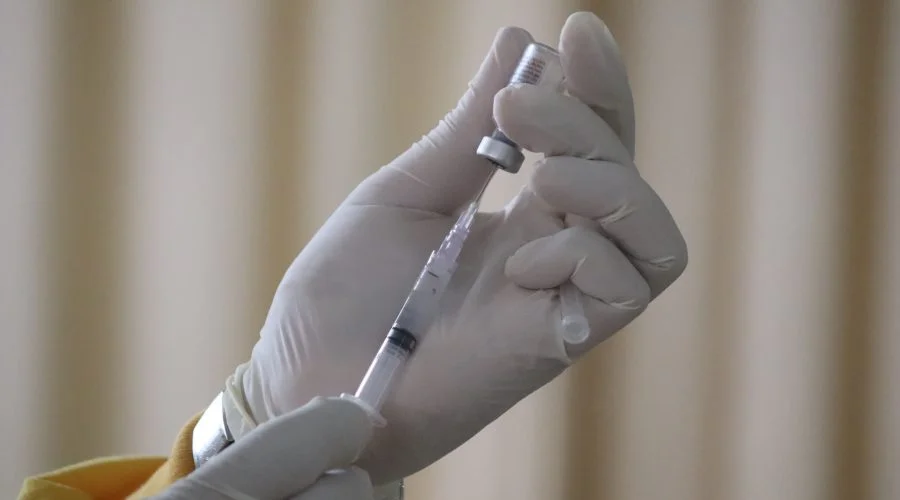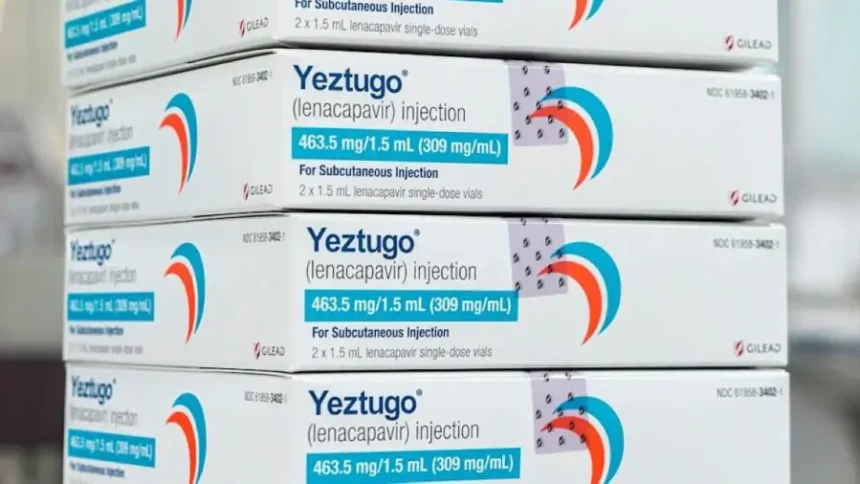The fight against HIV may be entering a new era in Canada. Lenacapavir, a twice-yearly injectable drug approved in the United States for HIV prevention, is under review by Health Canada and could become available to Canadians as early as 2026. This long-acting pre-exposure prophylaxis (PrEP) offers unprecedented convenience and effectiveness, potentially transforming HIV prevention strategies nationwide.
Health experts are calling lenacapavir a “monumental advance” in public health. Its six-month dosing schedule reduces barriers associated with daily oral medication, improves adherence, and could help curb new HIV infections, particularly among populations at high risk.
This article provides an in-depth look at lenacapavir, including its clinical efficacy, administration, potential cost, accessibility challenges, and the broader implications for HIV prevention in Canada.
Understanding Lenacapavir and How It Works
Lenacapavir belongs to a class of long-acting HIV-prevention drugs designed to block the virus before it establishes infection in the body. Administered as an injection beneath the skin of the abdomen, the medication creates a small “depot” from which it is gradually absorbed over six months.
Unlike daily oral PrEP pills, which rely heavily on strict adherence, lenacapavir offers flexibility. Once administered, the injection remains effective for months, ensuring continuous protection without the need for daily attention.
Clinical trials have demonstrated that lenacapavir nearly eliminates new HIV infections among high-risk populations, surpassing the efficacy of daily oral PrEP. Participants in studies showed higher adherence rates and fewer missed doses, highlighting the practical advantages of long-acting formulations. https://www.catie.ca/
Approval and Review Process in Canada
Gilead Canada submitted lenacapavir for pre-exposure prophylaxis use to Health Canada in April 2025. The application was accepted for review later that year. According to Health Canada, the standard evaluation timeline for a new indication of an already approved drug is approximately 300 calendar days, though it can vary depending on submitted data and additional considerations.
If approved, lenacapavir would mark a milestone in Canada’s HIV prevention strategy. The regulatory process is critical to ensure the drug’s safety, efficacy, and quality. Health Canada has also highlighted that physicians may use authorized medications off-label if there is a medical need, although formal approval ensures broader access and insurance coverage.

Clinical Effectiveness and “Wonder Drug” Status
Experts are optimistic about lenacapavir’s potential. Peter Newman, a University of Toronto professor specializing in social work and HIV prevention, describes the injection as a “monumental advance” in public health.
“Lenacapavir could significantly reduce new HIV cases,” Newman says. “It’s cost-effective over time because it prevents infections before they occur, saving lives and reducing healthcare costs.”
The drug’s ability to offer long-term protection without daily adherence makes it especially appealing for populations who struggle with routine oral medication, including individuals with unstable housing, privacy concerns, or busy lifestyles.
Administration and Safety Guidelines
Lenacapavir is administered in two subcutaneous doses under the skin of the abdomen. The injections create a slow-release depot, gradually dispersing medication throughout the body over six months.
Healthcare providers emphasize that patients must test negative for HIV before starting lenacapavir to ensure safe and effective use. The injection prevents HIV but does not protect against other sexually transmitted infections (STIs), so complementary prevention strategies, such as condoms, remain important.
Patrick O’Byrne, a nurse practitioner at an STI clinic in Ottawa, notes:
Accessibility and Potential Challenges
While lenacapavir promises to revolutionize HIV prevention, several factors could impact its accessibility in Canada. Health Canada’s approval is only the first step; provincial and territorial drug plans will determine coverage and distribution.
Cost remains a major consideration. In the United States, the annual list price of lenacapavir for HIV prevention is approximately USD $28,218. Although comparable to other PrEP options, this price may pose barriers for uninsured or underinsured individuals. In Canada, a combination of public and private insurance could help alleviate cost concerns, but equitable access is a continuing challenge.
Advocates argue for expanding the number of healthcare providers authorized to administer the injection, including doctors, nurses, nurse practitioners, and potentially pharmacists. Doing so could reduce wait times, improve convenience, and increase uptake among populations at risk.
Potential Public Health Impact
The introduction of lenacapavir in Canada could have far-reaching consequences for public health. By reducing the burden of new HIV infections, it may alleviate strain on healthcare systems, lower long-term treatment costs, and improve quality of life for individuals at risk.
Populations that could benefit the most include:
- Individuals at high risk for HIV due to sexual activity or injection drug use
- People with adherence challenges for daily oral PrEP
- Pregnant and breastfeeding individuals requiring long-acting preventive options
- Communities with limited access to regular healthcare services
By complementing existing HIV prevention strategies, lenacapavir has the potential to reduce disparities in infection rates and promote more equitable healthcare outcomes across Canada.
Expert Perspectives on Implementation
Healthcare providers and researchers emphasize that successful implementation requires coordinated efforts across provinces, healthcare facilities, and public health campaigns. Outreach and education will be critical to raise awareness about the new option and ensure that eligible populations can access it safely and effectively.
Sean Hosein, science and medicines editor at the Canadian AIDS Treatment Information Exchange (CATIE), states:
“The shots are only twice a year, reducing patient visits and barriers. Expanding access through multiple types of healthcare providers will make prevention more widely available.”
Experts also stress the importance of integrating lenacapavir with existing prevention programs, including testing, counseling, and harm reduction strategies.
Cost-Effectiveness and Health Economics
While upfront costs may seem high, the long-term economic benefits of lenacapavir could be significant. By preventing new HIV infections, healthcare systems may save billions in treatment costs over decades.
Analyses suggest that reducing HIV incidence could also decrease hospitalizations, improve workforce productivity, and enhance community well-being. Policymakers must weigh the initial investment against potential long-term gains in public health and economic stability.
Future Outlook for HIV Prevention in Canada
If lenacapavir is approved by Health Canada, it could redefine HIV prevention practices nationwide. Long-acting PrEP may increase adherence, reduce stigma associated with daily oral medication, and expand prevention options for marginalized populations.
Ongoing research and community-based implementation studies will be critical to understand real-world effectiveness, optimize dosing schedules, and ensure equitable access. Collaboration between federal agencies, provincial health authorities, healthcare providers, and advocacy groups will determine the success of lenacapavir in reducing HIV transmission in Canada.

Complementary Strategies and Continued Vigilance
Although lenacapavir represents a significant breakthrough, it is not a standalone solution. Comprehensive HIV prevention still requires:
- Consistent use of condoms and safer-sex practices
- Routine HIV testing and early diagnosis
- Access to healthcare services and support for high-risk populations
- Education and awareness campaigns targeting diverse communities
By combining medical innovation with public health interventions, Canada can continue to reduce HIV transmission rates and move closer to ending the epidemic.
Conclusion
Lenacapavir, the twice-yearly HIV prevention injection, offers a monumental advance in public health for Canada. Its long-acting formulation, high effectiveness, and convenience make it a promising tool in the ongoing fight against HIV.
While approval, distribution, and cost challenges remain, the potential impact on HIV prevention is transformative. If integrated with existing public health strategies and made widely accessible, lenacapavir could significantly reduce new infections, improve adherence to preventive care, and provide hope to populations at highest risk.
The coming years may mark a turning point in Canada’s HIV response, demonstrating how innovation, policy, and community engagement can work together to prevent infection and protect public health.




